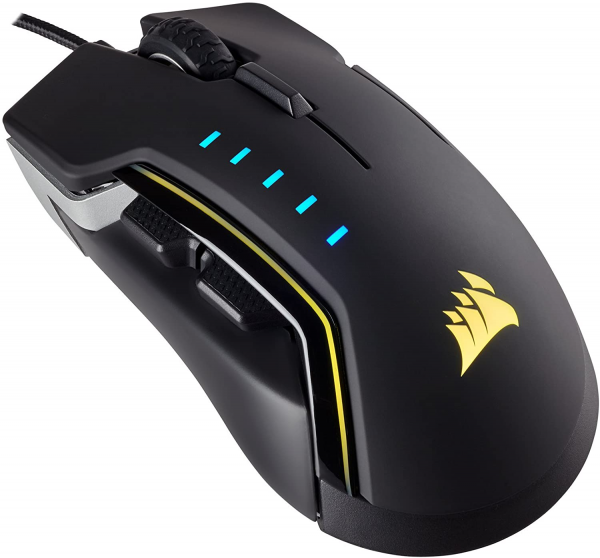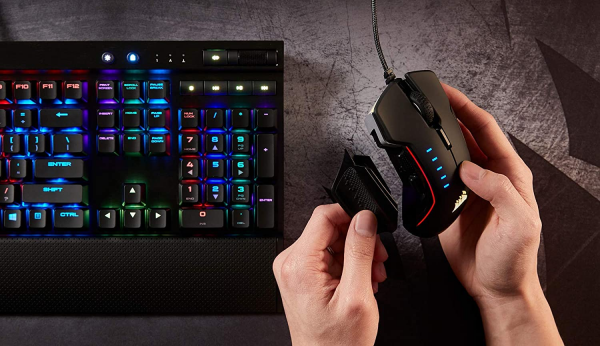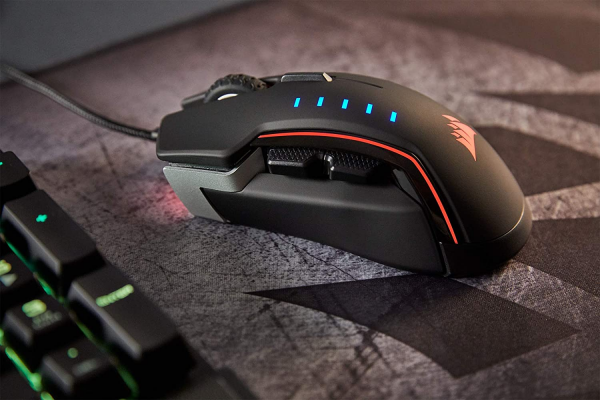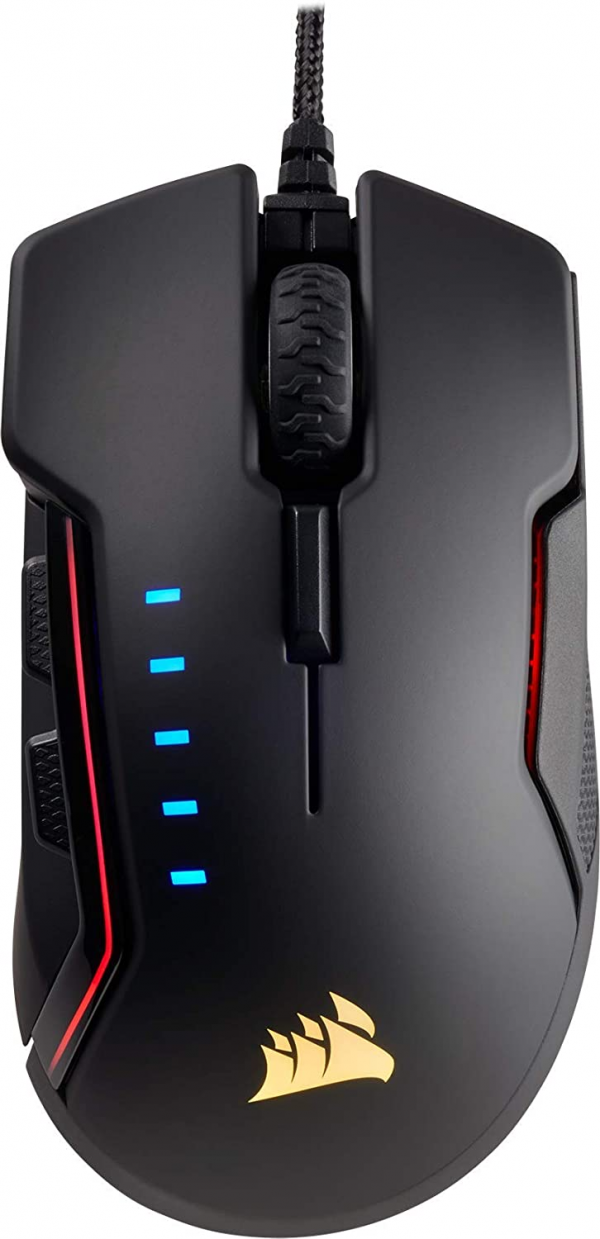Corsair
Corsair Glaive RGB: modularity for the thumb and advanced optical sensor
Aprox. 54€
See specificationsSaber, Harpoon, Scimitar ... and now Glaive. Corsair persists in knives to name his new mouse. Equipped with a latest generation optical sensor, it is more modular thanks to an interchangeable left edge to "perfectly fit all hands".
Positive points
Excellent optical sensor.
Interchangeable left edge for several possible grips / Well designed magnetic system.
Good grip.
Good quality switches on the main buttons.
Bad points
Very plastic appearance.
Unconvincing wheel and slice clicks.
The wheel itself is fairly average.
Our review
Ergonomics
Difficult to design a mouse that is suitable for all hands and all types of grips. This is why some manufacturers now offer modular mice (G.Skill Ripjaws MX780 RGB, Roccat Nyth ...), allowing users to adjust or even change certain parts. The Corsair Glaive falls into this category. Its left edge is removable and we can choose between three pieces supporting more or less the thumb, in order to adapt the shape of the mouse to our habits and our uses.
To do this, nothing could be simpler: said slices are fixed to the mouse by magnets, which makes their replacement particularly rapid. No need for a tool, just pull a little to unhook the piece, then insert another that comes to fit perfectly. No play to report, the adjustment is neat, it looks like the edge secured to the chassis.
This modular system is practical for possibly moving from a relaxed grip, using the widest edge for office use, for example, to a more nervous grip when it comes to playing games. fast games. One can then choose to use one of the other two narrower slices which favor a grip in the claw, or even with the fingertips.
The mouse is very handy in all three cases, particularly with the narrowest slices which allow it to be lifted easily - frequent action when playing in low sensitivity, to center the mouse on the mat. Its 122 g is therefore not a handicap. The widest slice is intended for use with a higher sensitivity, because the thumb is then less active and the mouse less easy to grip.
Despite its relatively generous dimensions (125.8 x 91.5 x 44.6 mm), the Glaive is nevertheless a bit short for the longest hands who will see their middle finger sticking out of the right click button if their palm is placed on the mouse - unless you use your middle finger to manipulate the wheel and put your ring finger on the right button.
Apart from this small ergonomic criticism, there is not much to complain about the Glaive. The fingers fall well under the buttons, including those of edge which are rather broad and well dissociated. We can be somewhat disappointed with the very plastic aspect of the whole; the finishes are however good and the soft plastic used on the top of the shell is pleasant to the touch.
The click quality of the main buttons does not call for any particular criticism: the reactivity is rather good and the operating noise reduced. It must be said that Corsair chose quality Omron switches (D2FC-FK), guaranteed for a minimum of 50 million activations; enough to see the future serenely, in principle. Unfortunately, the same cannot be said of the edge buttons, which are less pleasant and noisier. As for the wheel, it did not frankly convince us because of its not very notches and its operating noise. The switch - of the tact switch type, like those of the slice buttons - with which it is associated is also fairly firm, which is not ideal for playing.
Nothing to say about gliding, however: the large PTFE pads are quite thick and ensure smooth movement, even on hard surfaces.
Gaming mouse requires, we are of course entitled to a multicolored backlight (RGB), here present on several areas: logo, light bands on the top of the edges, as well as in front of the mouse, on both sides of the USB cable . The last backlit area corresponds to the 5 sensitivity levels of the sensor, displayed as bars on the top of the mouse. The level change is made via the button located above the wheel.

Precision
Like many manufacturers, Corsair trusted Pixart to equip its mouse with a high-performance optical sensor. This is a PMW3367, derived from other models in the 336x series that can be found in several Logitech, Asus ROG, SteelSeries mice, or in the latest Roccat models (renamed Owl-Eye in these).
This sensor has largely proven itself and provides the Glaive with both speed and precision. We have to hang on to catch him in default and he responds, so to speak, to all our requests. This makes it an ally of choice for fast games which sometimes involve sudden movements of the wrist and forearm, especially if playing in low sensitivity. Lovers of high sensitivities will for their part be more than served, since this sensor can reach a sensitivity of 16,000 dpi, which is much more than is necessary for the definition of our current screens. For example, at this maximum level of sensitivity, a movement of 2 cm is enough to make the cursor move across the width of 3 Ultra HD screens! Inexploitable for the moment, therefore, but we can at least be reassured, future definitions 8K and more will not pose any problem with such a sensor. However, most professional players are content with sensitivities of less than 1000 dpi on Full HD screens, which gives an idea of the room for maneuver ...
Regarding compatibility with different surfaces, optical sensor requires, we must forget about glass and other coatings that are too shiny or reflective. However, the Glaive sensor accommodates a wide variety of surfaces. We still recommend opting for a good mouse pad, which will not only provide better gliding, but will also prevent wear and tear on the pads too quickly.

Conclusion
Adaptable to several types of grips thanks to its 3 different slices dedicated to the thumb, the Glaive proves to be pleasant to handle. In addition to being fairly handy despite its generous dimensions, it benefits from an excellent optical sensor which makes it a serious candidate for FPS players, among others.

Specifications

